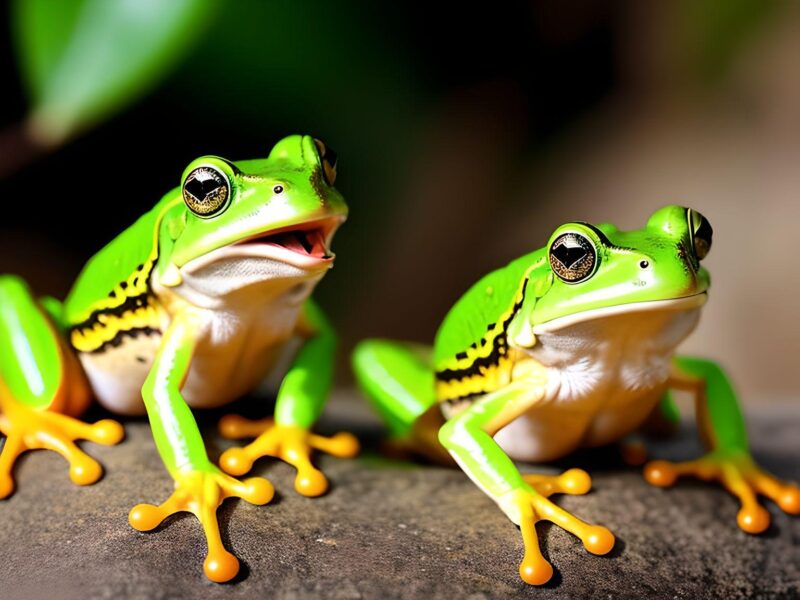Have you ever been out in the wilderness on a calm evening, only to be startled by a series of high-pitched screams? That’s exactly what happened to me during a recent camping trip. Imagine sitting by the campfire, enjoying the tranquility of the night, when suddenly, the quiet is shattered by these piercing sounds that seem to come out of nowhere.
It turns out, those spine-chilling screams are the calls of frogs. Yes, frogs! Curiosity got the better of me, and I embarked on a journey to uncover the truth behind these haunting vocalizations. What do they symbolize?
The Basics of Frog Communication
Frogs are not just about croaks and ribbits. Their vocal repertoire is vast, and each sound has a purpose. Before delving into the scream, it’s essential to understand the basics of frog communication.
Anatomy of Their Sounds
Frogs produce sounds using their vocal cords, much like humans. However, the mechanism is slightly different. They have a vocal sac, a flexible membrane that inflates and acts as a resonance chamber, amplifying their calls. This sac can be seen puffing out when a frog calls.
Different species have different vocal sac shapes, which contribute to the variety of sounds we hear. The size of the frog, the structure of its larynx, and the size of its vocal sac all play a role in determining the pitch and volume of its calls.
What’s The Purpose of These Calls?
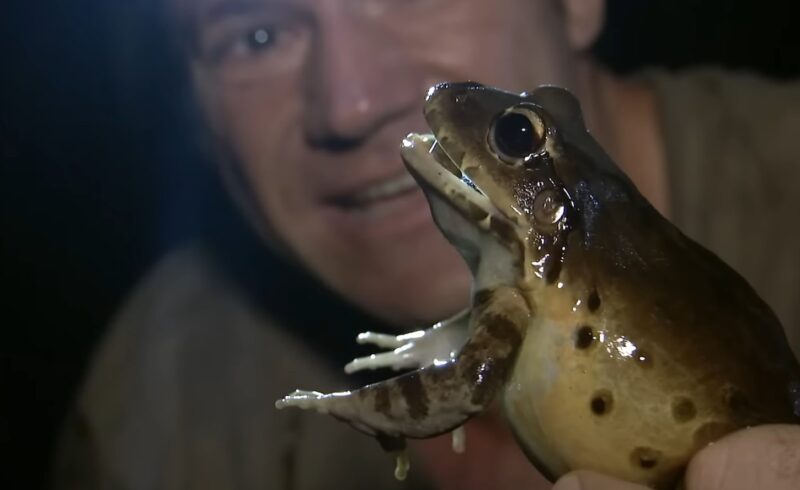
Frogs call for various reasons, from attracting mates to staking out territory. The most common call is the mating call, which males use to attract females. These calls are species-specific, ensuring that frogs of the same species can find each other even in dense habitats.
However, they also have distress calls, warning calls, and even rain calls. Each sound serves a purpose, whether it’s to warn off predators, communicate with other species, or signal changes in the environment.
Scream as a Distress Call
The scream is often a distress call. When a frog feels threatened, it might let out a high-pitched scream. This isn’t just a cry of fear; it serves a purpose. The sudden, loud noise can startle predators, giving the frog a chance to escape. It’s a survival mechanism.
For example, the red-eyed tree frog, when grabbed by a predator, emits a loud scream. This unexpected noise can surprise the attacker, like a snake or bird, causing them to momentarily release their grip and allow the frog to leap to safety.
The Element of Surprise
The scream’s effectiveness lies in its ability to surprise. In the wild, sudden loud noises can indicate danger, prompting predators to flee or hesitate. This momentary distraction is often all a frog needs to make a quick getaway.
Moreover, the scream can also alert other nearby frogs of the danger, serving as a warning call. This communal aspect of the scream showcases the intricate ways in which frogs communicate with each other and respond to threats.
Other Fascinating Frog Behaviors
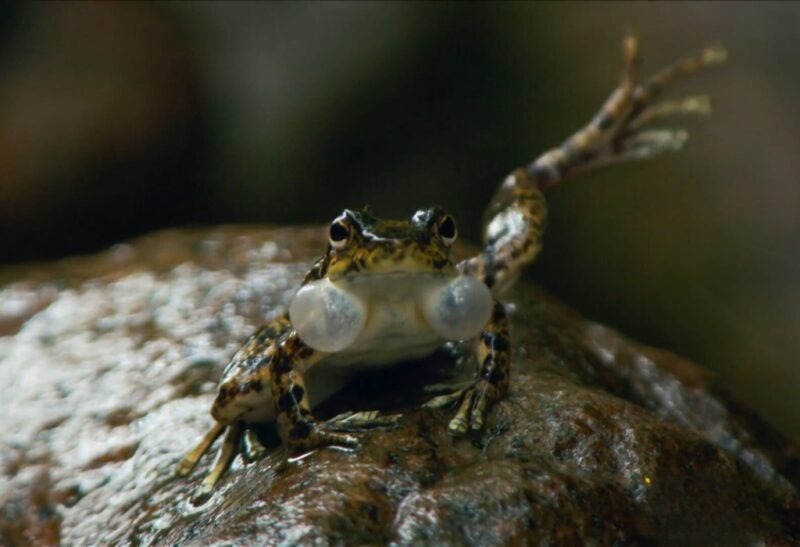
While the scream is undoubtedly intriguing, frogs exhibit a plethora of other behaviors that are equally captivating.
The Art of Camouflage
Many frogs have mastered the art of camouflage. Their skin patterns and colors allow them to blend seamlessly with their surroundings, making them invisible to predators. This natural defense mechanism is as crucial as the scream in ensuring their survival.
For instance, the leaf-litter frog perfectly mimics the appearance of dead leaves on the forest floor. When stationary, it’s almost impossible to distinguish the frog from its environment, protecting it from potential threats.
Dance of Attraction
Beyond vocal calls, some frogs use physical displays to attract mates. The foot-flagging behavior of certain species is a sight to behold. In areas with loud streams or waterfalls, vocal calls might not be effective due to the noise.
Here, male frogs wave their brightly colored legs to catch the attention of females, showcasing their vitality and suitability as a mate.
Frogs as Bioindicators
These animals, with their permeable skin and aquatic life stages, are sensitive to environmental changes. Their vocal behaviors, including the scream, can provide insights into the health of their habitats.
A decrease in their calls, including the distinctive scream, can be an alarming sign of environmental distress. Pesticides, pollutants, and habitat destruction can lead to a decline in frog populations.
When wetlands fall silent, it’s often an indication of broader ecological issues that can affect various species, including humans.
Climate Change and Frog Calls
Climate change has led to shifts in breeding seasons, affecting the timing and frequency of frog calls. Some species may scream or call more frequently due to increased stress from changing temperatures and water levels.
Monitoring these changes in vocal behavior can help scientists predict and understand the impacts of global climate shifts.
Are These Calls Culturally Significant?
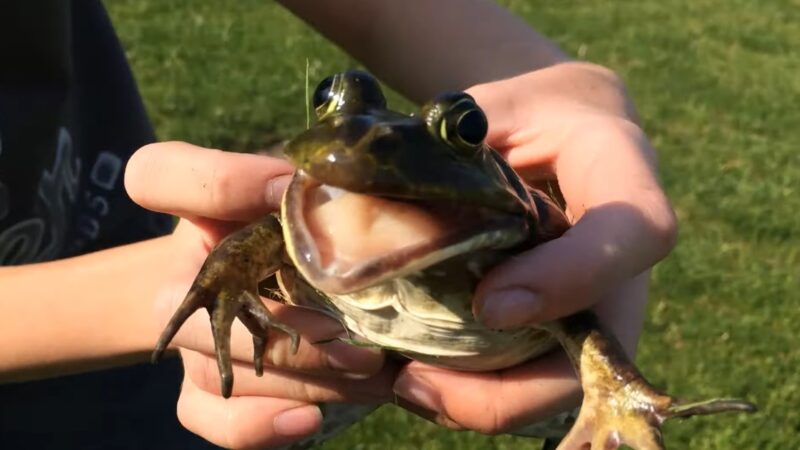
Throughout history, frog calls, including the eerie scream, have held cultural and symbolic significance in various societies. These sounds have inspired myths, stories, and even rituals.
Folklore and Myth
In many cultures, the scream of a frog is considered an omen or a sign from the supernatural realm. For instance, in some South American tribes, a frog’s scream at a particular time of the day might be interpreted as a warning or a prophecy.
Such beliefs highlight the deep connection between humans and the natural world, where even a simple frog call can hold profound meaning.
Modern Media
The distinctive scream of frogs has not gone unnoticed in modern media. Filmmakers and sound designers have used it to create ambiance in jungle scenes or even for comedic effect.
The scream, with its unexpected and jarring nature, adds an element of surprise and authenticity to various media productions.
Conservation Efforts
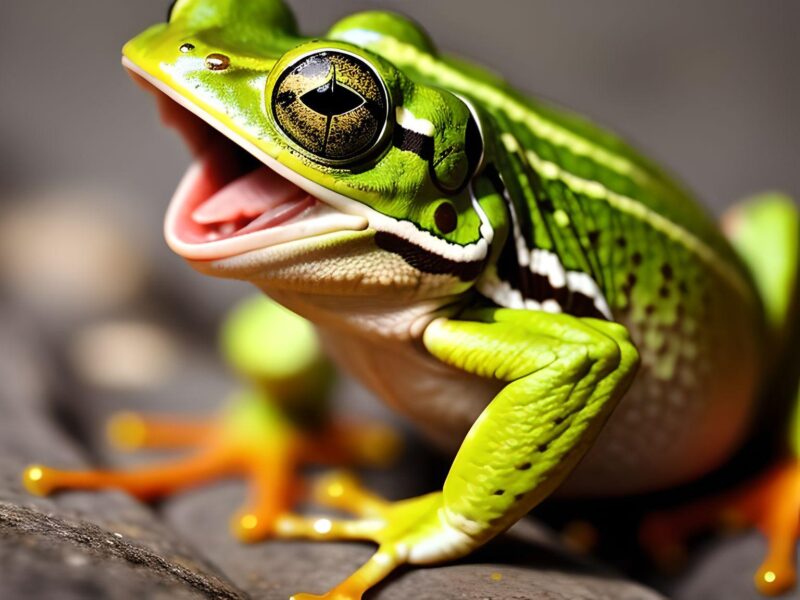
With the increasing threats to frog populations worldwide, conservation efforts are crucial to ensure that the chorus of the wild, including the iconic scream, is not silenced forever.
Wetland Conservation
Wetlands are vital habitats for frogs. Protecting these areas ensures that they have a safe space to breed, feed, and thrive. Wetland conservation not only benefits frogs but also a myriad of other species that rely on these ecosystems.
Citizen Science and Frog Monitoring
Ordinary people can play a role in conserving frog populations. Citizen science projects, where individuals record and report frog calls, including screams, have gained popularity.
These initiatives provide valuable data for scientists and help raise awareness about the importance of frogs in our ecosystems.
FAQs:
How long can a frog’s scream last?
The noise can last for more than five seconds
Can they change with age?
Yes, their vocalizations can change as they mature, especially in terms of mating calls.
Are there any species known specifically for their distinctive screams?
Yes, the “screaming tree frog” from South America is known for its particularly loud and distinctive calls.
Can pet frogs scream?
Pet frogs might exhibit behaviors similar to screaming, especially if they feel threatened or stressed.
Is it possible to use this to identify different species?
Yes, the unique patterns of screams can help experts identify different species.
Conclusion
In wrapping up, the scream of a frog, while just one of its many vocalizations, opens the door to a deeper understanding of these fascinating creatures. From their role as environmental guardians to their significance in culture and media, frogs are undeniably intriguing.
By appreciating and protecting them, we ensure that their calls, screams, and songs continue to enchant future generations.
Related Posts:
- Why Do Foxes Scream at Night? Vocal Enigmas of the Night
- Why Do Rats Have Tails? These are the Three Main Purposes
- What Is a Group of Pandas Called? - Pack, Clan, or…
- Why Do Otters Hold Hands? Learn More About This…
- How Long Can a Hydro Flask Be Used For? Maintenance…
- 9 Deserts in Africa: Pics, Maps, Interesting Facts & More


